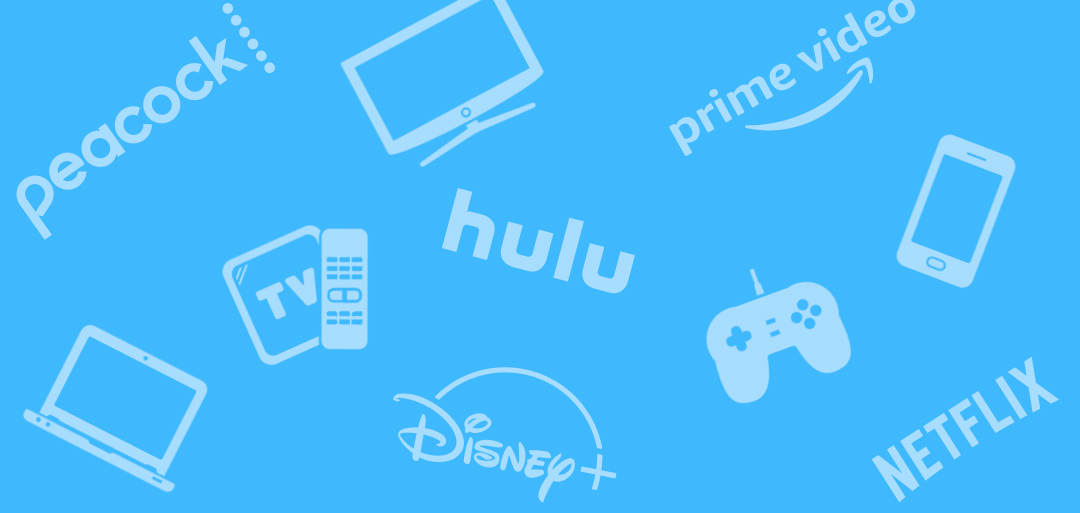Many people are diving into watching popular streaming platforms while consuming cable TV in a different way. Due to the shift, brands may miss reaching their target audience in real-time. Yet, Over-the-top and Connected-TV reform bridges the advertising gap with the watching shift to streaming video services.
Therefore, digital campaigns should be improved to ensure they reach the “streaming” audience. CTV and OTT advertisements could be, at times, confusing. However, we will provide a great overview of what the two entail.
Let’s begin our humble discussion with OTT and CTV first.
What’s Connected TV (CTV)?
Connected TV – CTV is a television set that connects easily to the internet through Wi-Fi or Ethernet cable. This makes it easier for viewers to stream OTT – over-the-top content on a normal screen.
Some CTV examples or CTV providers include smart TVs, Apple TV, Fire TV, and gaming consoles such as PlayStation.
92% of US households were reachable by CTV advertising. Actually, over 110 million GenZ and Millennials are CTV users. CTV is a subset of OTT that includes apps and services that don’t require any subscriptions to any pay-TV service, according to Statista, as of 2022.
What’s Over-the-Top (OTT)?
Over-the-top (OTT) means video content is streamed directly by people from the internet. It majorly deals with streamed content from any device as long as there is a stable internet connection and screen. Common OTT viewing devices include smartphones, tablets, gaming consoles, and computers.
Popular OTT services include Netflix, Hulu, Disney+, and Prime Video. OTT doesn’t even require a physical cable box as it broadcasts over the top of the traditional cable framework. The Over The Top (OTT) content is accessible through the internet.
People can also use OTT boxes or streaming devices like Chromecast, Apple TV, Roku box, and much more to connect to OTT services.
What’s CTV Advertising?
They are the ads that appear on internet-connected TVs or smart TVs. CTV advertising is gaining more popularity because the audience is engaged in watching the content. Therefore, users have to watch the ads without skipping or fast-forwarding the ads.
Additionally, there is data-driven targeting as the marketers reach their target audience with more certainty based on their likes. Moreover, there is high brand safety due to the high-quality nature of CTV.
What’s OTT Advertising?
It is a form of digital advertising that takes place on streaming services like YouTube and Hulu. The OTT ads can appear on any device that connects to the internet and streams video content. This is through smartphones, tablets, smart TVs, and computers.
OTT allows marketers to reach an audience that doesn’t have televisions in their homes. This helps to boost storytelling through messaging and extending premium content reach across devices.
The Key Differences Between CTV and OTT Advertising
The OTT CTV advertisement differences are not diverse. These include:
The Device
One major difference between OTT and CTV advertisements is the kind of device used to stream. The OTT ads display on smartphones, smart TVs, tablets, computers, laptops, and much more.
However, the CTV ads only show on internet-connected TVs. For example, if you are watching a video on YouTube and an advertisement pops up, that’s an OTT ad. However, if you’re exploring Fire TV and an ad appears, that’s a CTV ad.
Ad Format And Type
The OTT and CTV advertisement formats vary based on the streaming device. The display ad in OTT might appear next to the video above the suggestions. However, if the advertisement were on a connected TV, it would look different.
Benefits of OTT and CTV Advertising
These are the benefits of this new era of advertising:
More Audience Reach
OTT viewing allows companies/brands to reach a larger audience. Due to the ad format used, most viewers watch the advertisements until completion since the advertisements run on the full screen. CTV advertising also reaches a larger audience, unlike Traditional TV commercials. You also get a chance to reach an audience who are not watching traditional TV anymore.
Brand Safety
Brand safety is achieved due to on-demand ads or during live TV. The audience can be reached across reliable networks and content. You don’t have to worry whether the ad will appear on a reputed platform. The ad will appear on the OTT or CTV ad provider’s platform directly to their user’s devices or screens.
Furthermore, you can easily expand your reach and awareness by promoting your products and services. As more people see your ads, they will begin associating with your brand.
Great Target Capabilities
Through the OTT CTV advertisement, you are assured that your investment is being used to reach your potential customers. Additionally, it is quantifiable. Thus, you can measure the results you are getting, for example, by checking the video completion rates.
Specified Target Audience
The CTV and OTT viewing ads mostly appear before, during, or after a film or show. Therefore, advertisers can target audiences in several ways depending on the platform of choice or data access.
Consequently, you can target the audience based on interests, purchase history, age, location, and job role. Through target ads, you are assured of a return on investment (ROI). Although this is not possible in Europe.
Which Is Good For You?
OTT and CTV advertising can help you meet your company/brand goals. It just depends on the platform which your target audience uses most. Plus, what type of content they consume most.
Also, OTT and CTV streaming is the future, therefore, the audience will continue to grow. As a brand, you need to choose the right strategies to use.





